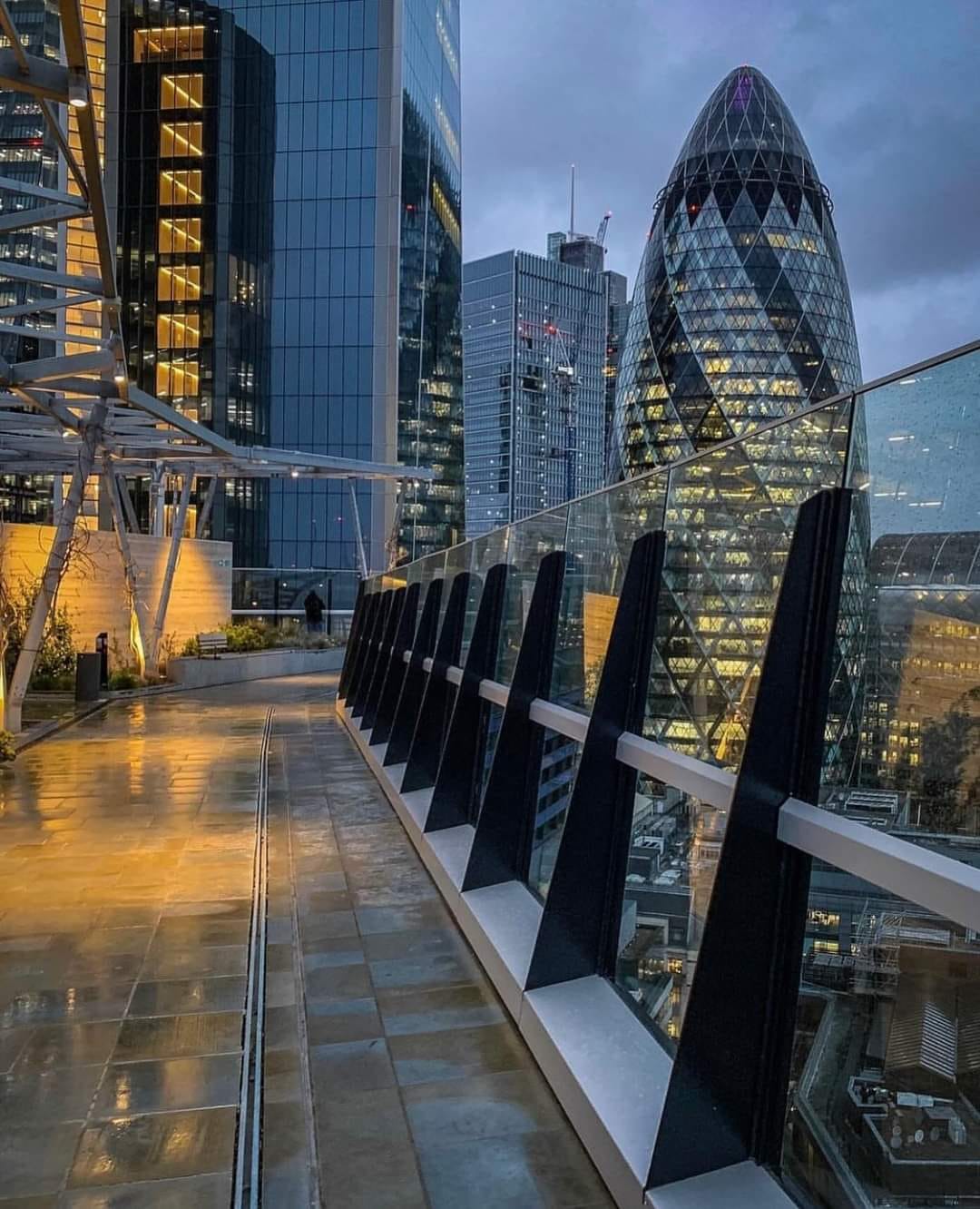Events
| Name | organizer | Where |
|---|---|---|
| MBCC “Doing Business with Mongolia seminar and Christmas Receptiom” Dec 10. 2024 London UK | MBCCI | London UK Goodman LLC |
NEWS

Mongolian National Mining Association demands accountability after protest turns violent www.gogo.mn
On April 21, during a meeting between the management of Badrakh Energy LLC, a Mongolian-French joint venture, and representatives opposing uranium mining, one of the protesters physically assaulted the company’s executive director, Marc Meleard.
In response to the incident, the Mongolian National Mining Association released a public statement condemning the attack and calling for appropriate legal action.
“The deliberate tarnishing, distortion, spreading of false information, and organized slander and attacks against companies operating within the legal framework of Mongolia are becoming increasingly widespread,” the statement read. “These actions now include threats to the health and safety of individuals performing their professional duties”.
The association emphasized that the recent assault on Marc Meleard highlights the seriousness of such threats and underscored the need for law enforcement agencies to take firm action to prevent future incidents.
“We hope that resolving this issue within the framework of the law will help prevent the recurrence of such unlawful acts, protect individual dignity, ensure normal business operations, and safeguard the health and safety of workers” the statement continued.
Highlighting the economic significance of the mining industry, the association noted that the sector accounts for 94% of Mongolia’s export revenue, 35% of state budget revenue, and 79% of foreign direct investment. It also provides over 75,000 jobs across state, private, and foreign invested companies.
“The member companies of the Mongolian National Mining Association are committed to operating responsibly within the laws and regulations of Mongolia, upholding international standards, and supporting clean energy development,” the statement concluded.
The association pledged continued cooperation with government agencies and the private sector to foster a stable and secure investment environment.
...
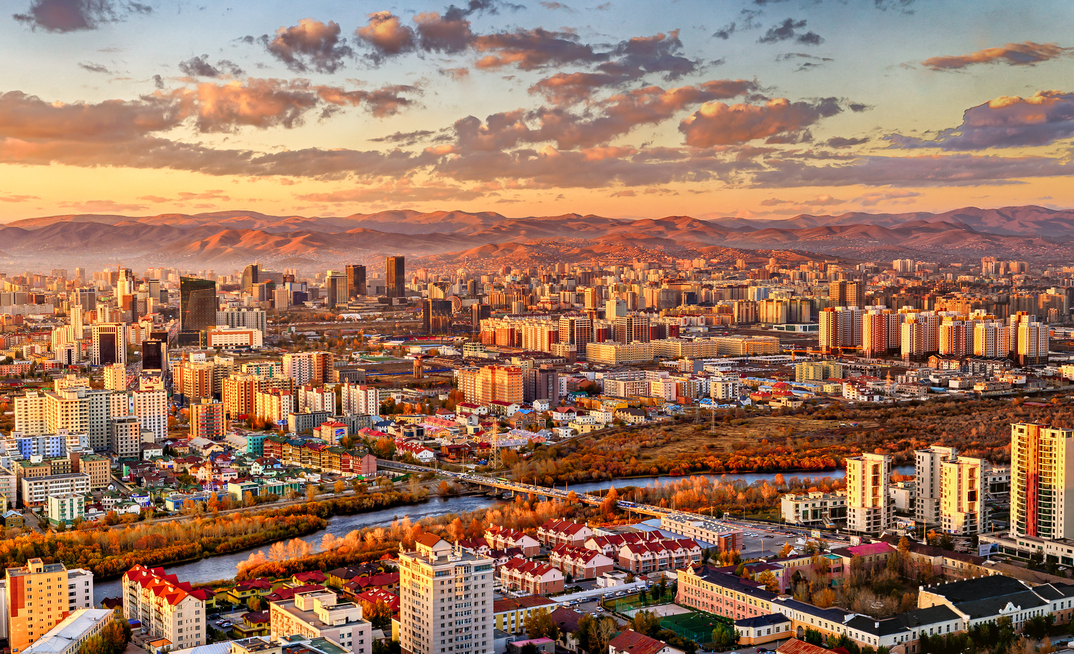
Mongolia’s Interim Free Trade Deal With the EAEU: What’s at Stake? www.thediplomat.com
Mongolia’s government sees the temporary FTA as tool to expand imports, but business groups and policy experts in Mongolia have voiced concern about the deal’s implications.
As Mongolia prepares to sign a temporary free trade agreement with the Eurasian Economic Union (EAEU), analysts and businesses alike are weighing the potential economic benefits against long-term structural risks.
During a March meeting between Andrey Slepnev, the EAEU’s trade minister and Gantumur Luvsannyam, Mongolia’s first deputy prime minister and minister of economy, the two sides finalized the remaining issues of the free trade agreement (FTA), paving the way for its upcoming signing. Mongolia is expected to sign the three-year FTA with the Russia-centered EAEU during Mongolian President Khurelsukh Ukhnaa’s official visit to Moscow in May.
If Mongolia and the EAEU were to sign the free trade agreement, this would be Mongolia’s second bilateral FTA after its 2015 Economic Partnership Agreement with Japan, and its first such agreement with a regional bloc. The interim agreement follows years of negotiation with the EAEU, which comprises Armenia, Belarus, Kazakhstan, Kyrgyzstan, and Russia.
The move marks a significant step in Mongolia’s broader efforts to diversify its economic partnerships and expand access to regional markets – particularly at a time of increasing geopolitical complexity and economic volatility. Policymakers see the temporary FTA as a test-run to see if Mongolian goods and services can be exported to destinations other than Russia and China. Mongolian officials have emphasized that the agreement is strictly temporary and focused on trade facilitation – not political or institutional alignment.
On April 16, during a government session, Mongolia’s Foreign Minister Battsetseg Batmunkh explained that the temporary FTA with the EAEU is for three years only – after that Mongolia can choose to let the deal lapse or renegotiate it. She emphasized that Mongolia has no obligation to keep a free trade partnership with the EAEU after three years.
Established in 2015, the EAEU is the product of Russia’s vision for a more integrated Eurasian economic space with its neighbors. The union facilitates free movement of goods, capital, services, and labor among its member states. In the first half of 2024, trade between EAEU member states rose by 7 percent. Yet the grouping has faced some questions regarding the benefits of membership, especially following Russia’s 2022 invasion of Ukraine. Uzbekistan and Tajikistan, for example, have resisted pressure from Moscow to pursue full membership.
Beyond its internal trade, the EAEU has concluded external FTAs with Vietnam, Serbia, and Iran, and has ongoing negotiations with Singapore, Egypt, Israel, India, and Mongolia. For Ulaanbaatar, a three-year FTA might present opportunities to expand exports and access a market of over 180 million consumers.
In 2015, the government of Mongolia and the EAEU signed a Memorandum of Cooperation. That year, a joint working group was established by the two sides, with its first session held in Ulaanbaatar. The second session took place in Moscow in 2016. In 2020, Mongolia and the EAEU agreed to establish a joint research team that would explore the feasibility of concluding an FTA, focusing on reducing tariff and non-tariff barriers.
The current interim FTA, covering the 2025–2028 period, builds upon these earlier frameworks. The timing of the deal – amid ongoing global economic shifts, sanctions on Russia, and China’s regional assertiveness – reflects Mongolia’s delicate balancing act between its two immediate neighbors. Expanding export destination is crucial for Mongolia’s national security.
According to a study by the Business School of the National University of Mongolia, an FTA with the EAEU could boost the export of niche Mongolian products, especially meat and textiles. Currently, Mongolian meat exports to EAEU countries face tariffs ranging from 15 to 50 percent. If the deal succeeds in reducing these, horse meat exports alone could rise by $1.7 million annually. Similarly, cashmere exports, though modest in absolute terms, may increase by up to $300 million with preferential access, particularly to Kyrgyzstan. In all, the study highlighted around 38 exportable product categories – including cashmere garments, leather goods, processed meat, and copper concentrates – where Mongolia has competitive potential.
On the import side, however, the impact is expected to be more substantial. Russia and other EAEU countries are poised to increase exports of vodka, dairy, poultry, fruit juices, and refined fuels to Mongolia. The National University of Mongolia study projected a 95 percent increase in imports from EAEU countries, potentially widening Mongolia’s already significant trade deficit. For example, imports of yogurt could rise by $2 million, while fuel imports may swell by over $80 million.
The same study warned that the agreement may lead to a 6.1 percent decline in Mongolia’s GDP growth, a 117 percent surge in imports, and a 3.2 percent reduction in government revenue by 2028. Key sectors like food production, textiles, and small-scale manufacturing could face heightened competition from cheaper, better-subsidized imports from Russia and Kazakhstan.
With that in mind, business groups and policy experts in Mongolia have voiced concern about the FTA’s implications for domestic industries.
While tariff concessions included in the FTA may boost exports to some extent, non-tariff barriers remain a major hurdle for Mongolia. Russia alone enforces nearly 800 non-tariff measures, including 38 veterinary requirements for horse meat imports. In many cases, Mongolia must meet stringent sanitary and phytosanitary standards to benefit from tariff reductions. This raises questions about whether local producers can scale to meet both quantity and quality demands in time.
Moreover, a 2016 study argued that a Mongolia-EAEU agreement may inadvertently deepen Mongolia’s economic dependence on Russia. While designed as a trade pact, the FTA comes at a time when the EAEU – especially under Russian leadership – is increasingly seen as a geopolitical tool amid tensions with the West.
The FTA could provide momentum for bilateral infrastructure cooperation between Mongolia, and Russia, particularly around railway and road development. The Ulaanbaatar Railway Joint Venture, co-owned by Mongolia and Russia, is already central to trade flows across the region, but concerns persist over its preferential treatment of Russian cargo over domestic needs.
Standard harmonization and technical cooperation could also be expanded under the deal, particularly if linked with broader Eurasian transport corridors. This could support Mongolia’s long-term ambitions to become a land-linked transit hub between Europe and Asia.
Following resistance from the public and businesses, the Mongolian parliament has delayed debate on the trade deal with EAEU, citing incomplete research and public consultation. A motion to hold the Budget Committee meeting behind closed doors was rejected, and 52.6 percent of lawmakers supported postponing debate.
For a landlocked country with a relatively small domestic market, Mongolia’s effort to deepen trade relations with regional blocs makes sense. The interim nature of the agreement offers a testing ground to assess its real benefits and challenges before committing to longer-term arrangements.
Still, the deal also carries significant risks. It may exacerbate existing trade imbalances, increase dependency on Russia, and undermine local producers unless carefully managed. While Mongolia aims to expand its economic diplomacy, its leaders must ensure that liberalization measures do not come at the cost of national food security, industrial competitiveness, or strategic autonomy.
As the global order continues to fragment, Mongolia’s decision to engage with the EAEU reflects both pragmatism and pressure. The challenge lies not just in securing access to new markets, but in doing so in a way that balances growth with sovereignty.
By Bolor Lkhaajav and Erdene-Ochir Enkhbayar
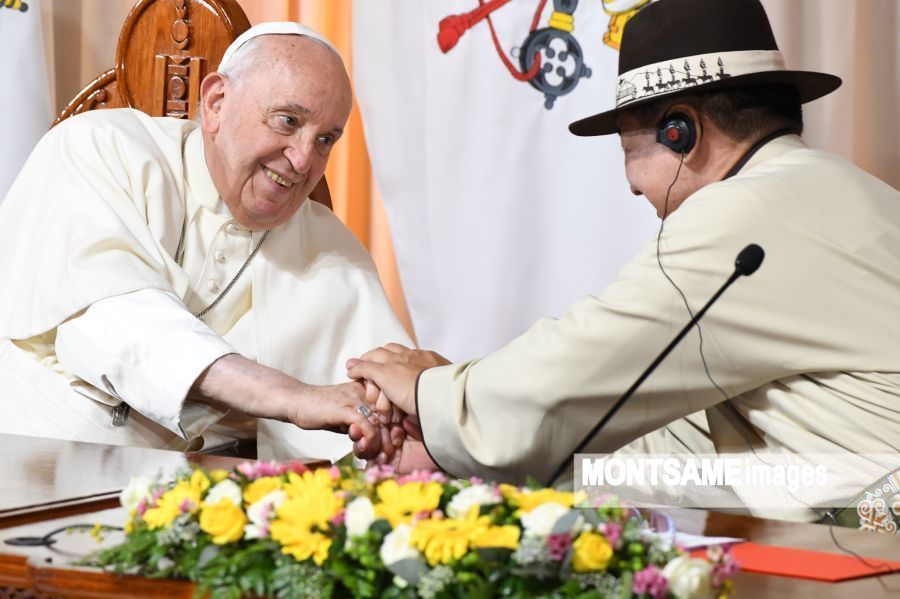
In Memory of His Holiness Pope Francis www.montsame.mn
People around the world, who hold peace, loving kindness, and humility dear to their hearts, are saddened by the passing of His Holiness Pope Francis, Head of the Holy See, a beacon of compassion and moral uprightness. Pope Francis embodied empathy and understanding, inspiring millions, far beyond the Catholic Church.
Pope Francis will be remembered not only for his unwavering dedication to the vulnerable and the marginalized but also for his tireless efforts to foster interfaith dialogue, promote peace, and build bridges between communities. His legacy of kindness, inclusion, and global solidarity will continue to inspire generations to come.
In 2023, at the invitation of President of Mongolia Khurelsukh Ukhnaa, Head of the Holy See Pope Francis paid a State Visit to Mongolia. The State Visit was deeply meaningful to the Mongolian people, marked by mutual respect, spiritual connection, and heartfelt exchange.
Following the announcement of the passing of His Holiness, Mongolian leaders and religious figures expressed their heartfelt condolences:
President of Mongolia Khurelsukh Ukhnaa: “On behalf of the people of Mongolia, I extend my deepest condolences to the Roman Curia and the citizens of the Vatican City on the passing of an esteemed man, His Holiness Pope Francis, Head of the Holy See.
The Apostolic Journey of His Holiness Pope Francis to Mongolia in 2023 was an event of exceptional importance that will be etched forever in golden letters in the history of our bilateral relations. It promoted to the world the genuine spirit of the Mongolian people of upholding statehood traditions, honoring unity and harmony, embracing and consolidating peace, and respecting freedom of thought.
“Mongolia seems to have no end, and its inhabitants are few, a people few in number of a great culture. I think it will do us good to understand this silence, so vast, so big. It will help us understand what it means: not intellectually but with the senses. Mongolia is to be understood with the senses.”
The Apostolic Journey of His Holiness to our land of the Eternal Blue Sky took place in a heart-warming atmosphere filled with loving kindness, compassion, and genuine sincerity. The people of Mongolia will always remember the heartfelt words Your Holiness addressed to us.”
Prime Minister of Mongolia Oyun-Erdene Luvsannamsrai: “We deeply mourn the loss of this noble and humble leader who referred to himself as a ‘Pilgrim of Hope’ and stood as a global advocate for peace, faith, and the core values of humanity.
Pope Francis, Head of the Holy See, was a close and cherished friend of the Mongolian people. His visit marked a historic milestone—the first-ever papal journey to Mongolia.
Seven hundred seventy-seven years after the envoy Giovanni da Pian del Carpine delivered a message from Pope Innocent IV to the Mongolian Empire, Pope Francis honored us with his presence, reaffirming a centuries-old connection.
May the noble legacy of His Holiness, who made invaluable contributions to global harmony, continue to inspire present and future generations.”
Gandantegchenlin Monastery, the Centre of Mongolian Buddhists: “On behalf of all Buddhist devotees in Mongolia, Gandantegchenlin Monastery extends its deepest condolences on the passing of His Holiness Pope Francis.
His Holiness devoted his life to the pursuit of unity, compassion, and peace for all humankind. He played an essential role in fostering mutual respect and understanding between the world’s religious traditions.
His enduring legacy of wisdom, kindness, and spiritual leadership will remain in the hearts of the faithful around the world.”

China exports Xi Jinping Thought to Mongolia www.intellinews.com
Two key works promoting Xi Jinping Thought have been translated into Cyrillic Mongolian and released in Mongolia. Beijing presents the move as a gesture of cultural exchange and an effort to share its governance model with Mongolians. However, many view it as an effort by the Chinese Communist Party (CCP) to spread propaganda and expand its influence in the country. Still, most Mongolians believe the books are unlikely to overcome centuries of deep-rooted mistrust toward China.
On December 2, 2024, Mongolia hosted the launch of the Cyrillic Mongolian editions of Xi Jinping: The Governance of China (Volume II) and Xi Jinping's Excerpts on Poverty Alleviation, in tandem with a governance seminar in Ulaanbaatar. The event marked the 75th anniversary of China-Mongolia diplomatic relations and the 10th anniversary of the countries’ strategic partnership. Meanwhile, CCP mouthpiece Global Times framed the occasion as an effort to enhance mutual understanding and offer Mongolia a guidebook on Xi Jinping’s governance philosophy and China’s poverty reduction strategies.
Officials and scholars from both countries spoke at the event, while Mongolian Deputy Parliamentary Chairman Khurelbaatar Bulgantuya and State Secretary Adiyasuren Davaajargal praised China’s modernisation and poverty alleviation efforts. This is a common theme at events orchestrated by the CCP, where officials from developing countries often reference the claim that the Party lifted 800 million Chinese out of poverty. However, this oft-cited “economic miracle” fails to acknowledge that the reason China had 800 million people living in poverty in the first place was the ill effects of communism—and the way Beijing lifted people out of poverty was by relaxing communism and allowing private enterprise. That process began in 1978, shortly after the death of Mao Zedong.The percentage growth of China’s per capita GDP from 1978 until today is astronomical—it has risen from $156 per year in 1978 to $12,500 today, translating to an expansion of 7,913% (see above).
Mongolia, after the collapse of the USSR in 1990, transitioned to both a multi-party democracy and a free-market capitalist system. As a result, its GDP per capita rose from $472 in 1990 to $5,838 today, an increase of approximately 1,136.4% (see below). While the percentage growth is smaller than China’s, Mongolia’s economic progress is still nothing short of miraculous.
What’s more, China didn’t surpass GDP per capita of $5,000 until 2011. The point is, there may not be much that China can teach Mongolia about poverty alleviation. Mongolia already has a higher level of capitalism than China. China's advantages lie in factors Mongolia simply can’t replicate: a much larger population, more international borders (China shares land borders with 14 countries, while Mongolia has only two neighbours—Russia and China), and crucially, access to the sea. Mongolia is landlocked. And there’s nothing in Xi Jinping’s writings that will change any of that.
The books were translated and published in Cyrillic Mongolian—the official writing system of independent Mongolia—despite the government’s recent push to revive traditional Mongolian script. While there are roughly 50% more ethnic Mongols living in China than in Mongolia, the choice of Cyrillic suggests that Beijing was specifically targeting the Mongolian public. Ethnic Mongols in China typically read and write in either traditional Mongolian script or simplified Chinese, and they have already gained access to Xi Jinping’s works in those languages.
Just before the books were released in Mongolia, the CCP’s International Department held an event in China showcasing development progress in Inner Mongolia. The event emphasised Xi Jinping’s leadership in driving regional revitalisation and high-quality development, with Inner Mongolia’s Party leaders reaffirming their commitment to his policies. As is always the case, CCP media reported that international diplomats, political leaders, and business representatives praised China’s economic achievements and viewed Xi’s development model as a reference point for developing nations. However, people in developing nations—particularly in Mongolia—do not necessarily agree.
Amarsanaa Erdenebileg, a Mongolian business school graduate from Ulaanbaatar, acknowledged that the release of Xi Jinping’s books in Cyrillic Mongolian could be an attempt to expand Chinese ideological influence in Mongolia. However, he noted that Mongolians have historically held a deep mistrust of China, and this initiative might ultimately fail. “We have always been sceptical of Chinese influence attempts,” he said, adding, “therefore, it may backfire on China’s attempt to influence.”
When asked whether Mongolians would actually read the books, Amarsanaa admitted that some people would. However, he was doubtful about any meaningful impact. “I believe it won’t affect much,” he said. He explained that while there are some in Mongolia who think the country would be better off aligning more closely with China, there are also many who strongly oppose Chinese influence. “There are those who believe that Mongolia is better off following China,” he said, “and there are those who really hate China.” Ultimately, he suggested that the book release is unlikely to significantly change Mongolian attitudes toward China. He concluded by saying, “We are way more educated than we were before. We’ll learn what we need to learn—but we won’t be influenced.”
Chinguun Batsaik, who lives in Ulaanbaatar, offered a different perspective, arguing that China already has influence in Mongolia. “In fact, I believe they have already established a powerful influence in terms of commerce and an economic standpoint,” he said. While the release of Xi’s books in Cyrillic Mongolian may be seen as an ideological push, Chinguun suggested that China's real power in Mongolia lies in its economic presence rather than its political messaging.
Bat-Amgalan Enkhtaivan offered a nuanced perspective, highlighting the broader geopolitical context—particularly Mongolia’s delicate position amid the ongoing Russia-Ukraine war. He noted that maintaining neutrality could become increasingly difficult if global tensions escalate. “Russia’s aggressive assertions are a significant concern for Mongolia as well. Therefore, any movement made by the Mongolian government is critical and complex,” he noted.
The release of Xi’s works in Cyrillic Mongolian is a strategic move by the CCP to extend its ideological and political influence into Mongolia. This aligns with Beijing’s longstanding use of soft power to shape narratives in foreign countries.
Traditionally, Mongolia has balanced its relations with China and Russia while strengthening ties with Western democracies, including the United States, Japan and South Korea. At the same time, it is working to reduce its economic dependence on China, which accounts for over 80% of its exports—mainly coal and minerals.
From Moscow’s perspective, China’s move may be seen as encroaching on its traditional sphere of influence. Though Beijing and Moscow maintain close ties, they have historically competed for leverage in Mongolia. With Russia distracted by the war in Ukraine, Beijing may see this as an opportune moment to consolidate its position.
While China’s push to export its governance model is notable, the conclusion has to be its actual impact is likely to be limited. Deep-rooted distrust of China and Mongolia’s commitment to its “third neighbour” policy will continue to constrain Beijing’s soft power ambitions.
BY:
Antonio Graceffo, PhD, China-MBA, is an economist and China analyst. He has spent over 20 years living in Asia, including seven years in China, three in Taiwan and four in Mongolia. He conducted post-doctoral studies in international trade at the School of Economics, Shanghai University, and holds a PhD from Shanghai University of Sport, and a China-MBA from Shanghai Jiaotong University. Antonio has authored seven books on Asia, with a focus on the Chinese economy.

International Open Tender for the Tuul Highway Reopens www.montsame.mn
The international open tender for the construction of the Tuul Highway was launched on January 27, 2025, with submissions and materials being verified within the set timeframe in accordance with relevant laws. However, due to bidders not meeting the requirements, the open tender for the Tuul Highway reopened.
The construction of the Tuul Highway is one of the major projects to expand and develop the road network of Ulaanbaatar and alleviate the traffic congestion. With its construction, the average traffic speed is estimated to increase by 14 percent, and passengers would be able to travel non-stop on the 32km highway, which is an international expressway with no traffic lights.
This six-lane Tuul Highway is planned to run 32 km, starting from the Bayanzurkh checkpoint or Ulaanbaatar-Nalaikh Highway on the east part of Ulaanbaatar City, to the safety roundabout that leads to the Western aimags.
Within the scope of this Project, a road network that runs around the Capital City will be built with two main intersections of different levels, 13 bridges with a length of 9870 meters in total, and seven tunnels with a length of 370 meters in total.

Law on Mining Products Exchange to Be Withdrawn www.montsame.mn
A decision was made at the session to withdraw the draft law on Amendments to the Law on Mining Products Exchange from the Government of Mongolia. A temporary Trade Agreement proposal with the Eurasian Economic Commission and its members was presented, and it’s been decided that the relevant Standing Committee of the State Great Khural should discuss it.
It was decided that suggestions made by members of the Group on the draft Agreement between the Government of Mongolia and the Government of the Russian Federation to export jet fuel to Mongolia should be studied, with detailed regulations be reflected in the draft Agreement, and the Ministry of Foreign Affairs and the Ministry of Mining and Heavy Industry should continue working to improve the draft Agreement.
Furthermore, Deputy Speaker of the State Great Khural Bulgantuya Khurelbaatar, who is the Head of the Working Group to formulate a draft Law on Ensuring the Coordination between the Budget Law and other regulations, presented analyses and suggestions on the Budget Schedule to the Group members.
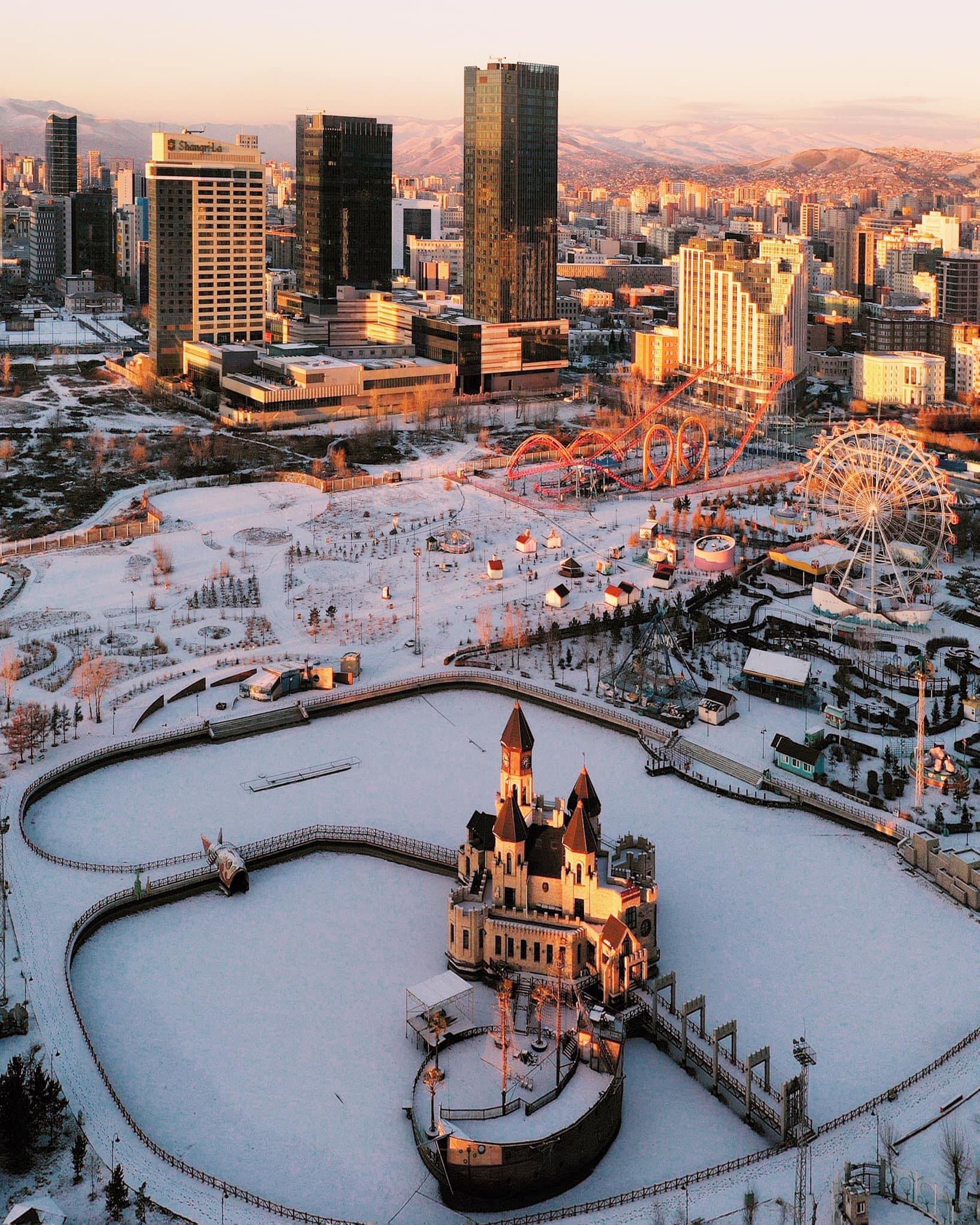
Mongolia's Air Treatment Systems Market Sees Over 5% Growth Boosted by Pollution Awareness www.finance.yahoo.com
Air treatment systems/air purifiers in Mongolia are gaining traction as the country's air pollution challenges become more pronounced, particularly during winters when extensive coal-burning for heating severely impacts air quality.
The government has introduced several initiatives to combat this crisis, including subsidies for cleaner heating solutions, stricter regulations on coal usage, and collaborations with international organizations to improve urban air quality. These efforts are fostering increased interest in air treatment systems among consumers, particularly in urban areas like Ulaanbaatar, where awareness of the health risks associated with poor air quality is rising. Combined with growing urbanization and a focus on public health, these developments are positioning air treatment technologies as an emerging trend in Mongolia's environmental and health-conscious landscape.
Affordable air treatment systems dominate the market. The prevalence of private-label brands has driven the popularity of low- to mid-priced systems, which collectively account for over 65% of the market share by revenue.
In Mongolia's air treatment systems market, ensuring a steady supply of replacement filters and robust after-sales support is emerging as a key differentiator. The efficiency of these systems hinges on timely filter replacements, making it essential for companies to build reliable networks for servicing and parts delivery.
However, with many brands relying on dealers or distributors, maintaining this support remains a challenge. Companies that establish well-organized after-sales systems can not only address these challenges but also foster trust, enhance customer satisfaction, and position themselves competitively in a market where maintenance accessibility is often limited.
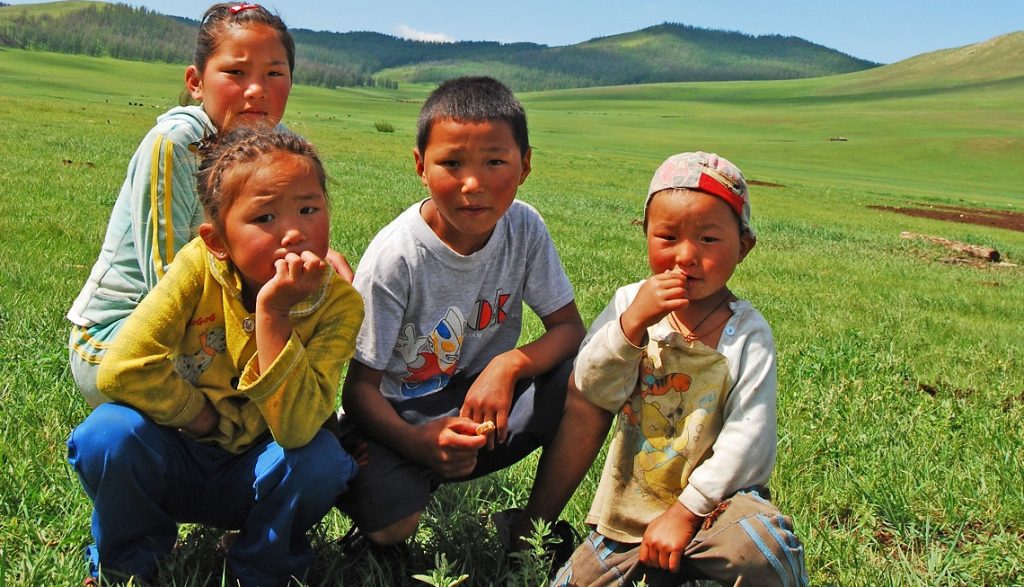
Mongolia aims to have a population of 5 million by 2050 www.news.mn
The Mongolian population has been decreasing steadily in recent years. According to the information of Mongolian Statistics Committee, 57300 mothers gave birth in 2024. This is a decrease of more than 10 percent from the previous year.
Mongolia’s long-term development policy aims to have a population of 5 million by 2050. If the annual population growth exceeds 1.7 percent per year, Mongolia will reach the goal. But based on current indicators, Mongolia’s population will not reach the level by 2050.
The decreasing birth rate has many causes. One of these causes is that women of reproductive age are having children later. Experts say that the birth rate is expected to decline further by 2030. In Mongolia, a family with 2–3 children is considered a large family. As of today, there are 167 thousand families with three or more children.
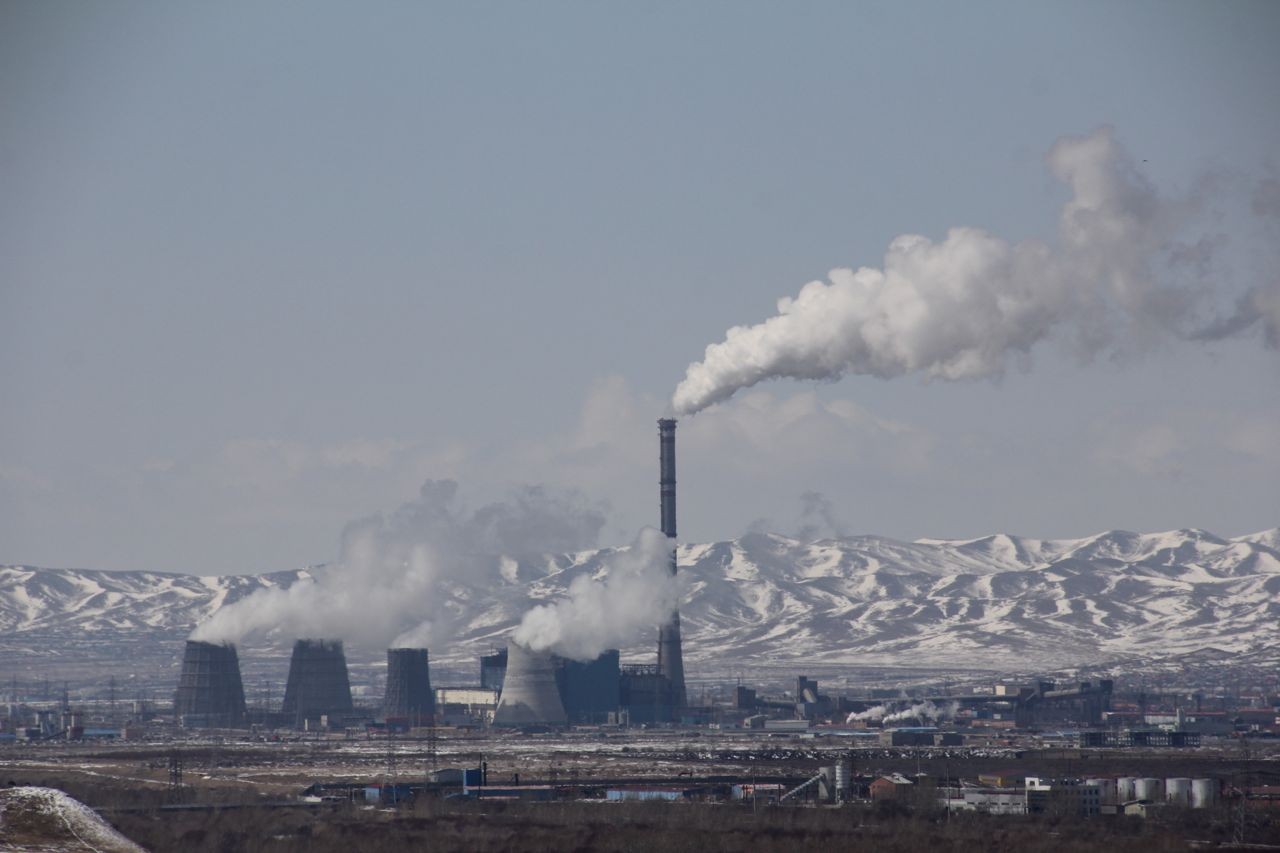
International Open Tender for the Thermal Power Plant No. 5 to Be Announced in May www.montsame.mn
The Thermal Power Plant No. 5 with a capacity of 340 Gcal of heat and 300MW of electricity will be built in the 20th khoroo of Bayangol district, Ulaanbaatar.
Governor of the Capital City of Mongolia and Mayor of Ulaanbaatar Nyambaatar Khishgee remarked, “Ulaanbaatar has not built a single power plant in 41 years since 1984, resulting in the slow urbanization of the city. Therefore, preparations have been made to announce an international open bid for the Thermal Power Plant No. 5 (TPP-5) in May 2025 to increase the heat supply in the western part of Ulaanbaatar. An environmental impact assessment has been conducted, and the feasibility study has been revised. The new feasibility study concluded that the initially planned 10 hectares of land are insufficient for the construction of the power plant. With the additional land acquisition, the TPP-5 Project will be implemented on 15 hectares.
Enterprises and organizations affected by the land acquisition will be compensated or provided with equivalent land in accordance with the Land Law of Mongolia. The construction of TPP-5 will provide heat to Tavan Shar, 21st district, “Khilchin” Town, Tolgoit, Bayangolyn Am, Bayankhoshuu, the 1st, 3rd, and 4th districts. Approximately 51 thousand households will be provided with central heating.
Moreover, the Ulaanbaatar City Engineering Plant includes the expansion of the “Amgalan” TPP to improve heat supply to the eastern part of the city and significantly reduce the load on TPP 4.

Non-Resident Ambassadors to Mongolia Present Letters of Credence to the President of Mongolia www.montsame.mn
On April 21, 2025, non-resident Ambassadors Extraordinary and Plenipotentiary of foreign countries to Mongolia presented their Letters of Credence to President of Mongolia Khurelsukh Ukhnaa.
Ambassador Extraordinary and Plenipotentiary of the Kingdom of Cambodia to Mongolia Soeung Rathchavy, Ambassador Extraordinary and Plenipotentiary of the People’s Republic of Burkina Faso to Mongolia Daouda Bitié, Ambassador Extraordinary and Plenipotentiary of the Republic of Armenia to Mongolia Vahe Gevorgyan, Ambassador Extraordinary and Plenipotentiary of the Republic of Zambia to Mongolia Ivan Zyuulu, Ambassador Extraordinary and Plenipotentiary of the United Republic of Tanzania to Mongolia Khamis Omar, and Ambassador Extraordinary and Plenipotentiary of the Kingdom of Norway to Mongolia Vebjørn Dysvik presented their Letters of Credence to President of Mongolia Khurelsukh Ukhnaa. President Khurelsukh expressed congratulations to the non-resident Ambassadors on assuming their duties and wished them success.
The Head of State of Mongolia expressed confidence that the Ambassadors would strive to strengthen bilateral relations and cooperation, and affirmed that the State and Government of Mongolia would provide full support in this regard. President Khurelsukh emphasized Mongolia’s commitment to enhancing cooperation within the international community, including the United Nations and other international organizations.
- «
- 1
- 2
- 3
- 4
- 5
- 6
- 7
- 8
- 9
- 10
- 11
- 12
- 13
- 14
- 15
- 16
- 17
- 18
- 19
- 20
- 21
- 22
- 23
- 24
- 25
- 26
- 27
- 28
- 29
- 30
- 31
- 32
- 33
- 34
- 35
- 36
- 37
- 38
- 39
- 40
- 41
- 42
- 43
- 44
- 45
- 46
- 47
- 48
- 49
- 50
- 51
- 52
- 53
- 54
- 55
- 56
- 57
- 58
- 59
- 60
- 61
- 62
- 63
- 64
- 65
- 66
- 67
- 68
- 69
- 70
- 71
- 72
- 73
- 74
- 75
- 76
- 77
- 78
- 79
- 80
- 81
- 82
- 83
- 84
- 85
- 86
- 87
- 88
- 89
- 90
- 91
- 92
- 93
- 94
- 95
- 96
- 97
- 98
- 99
- 100
- 101
- 102
- 103
- 104
- 105
- 106
- 107
- 108
- 109
- 110
- 111
- 112
- 113
- 114
- 115
- 116
- 117
- 118
- 119
- 120
- 121
- 122
- 123
- 124
- 125
- 126
- 127
- 128
- 129
- 130
- 131
- 132
- 133
- 134
- 135
- 136
- 137
- 138
- 139
- 140
- 141
- 142
- 143
- 144
- 145
- 146
- 147
- 148
- 149
- 150
- 151
- 152
- 153
- 154
- 155
- 156
- 157
- 158
- 159
- 160
- 161
- 162
- 163
- 164
- 165
- 166
- 167
- 168
- 169
- 170
- 171
- 172
- 173
- 174
- 175
- 176
- 177
- 178
- 179
- 180
- 181
- 182
- 183
- 184
- 185
- 186
- 187
- 188
- 189
- 190
- 191
- 192
- 193
- 194
- 195
- 196
- 197
- 198
- 199
- 200
- 201
- 202
- 203
- 204
- 205
- 206
- 207
- 208
- 209
- 210
- 211
- 212
- 213
- 214
- 215
- 216
- 217
- 218
- 219
- 220
- 221
- 222
- 223
- 224
- 225
- 226
- 227
- 228
- 229
- 230
- 231
- 232
- 233
- 234
- 235
- 236
- 237
- 238
- 239
- 240
- 241
- 242
- 243
- 244
- 245
- 246
- 247
- 248
- 249
- 250
- 251
- 252
- 253
- 254
- 255
- 256
- 257
- 258
- 259
- 260
- 261
- 262
- 263
- 264
- 265
- 266
- 267
- 268
- 269
- 270
- 271
- 272
- 273
- 274
- 275
- 276
- 277
- 278
- 279
- 280
- 281
- 282
- 283
- 284
- 285
- 286
- 287
- 288
- 289
- 290
- 291
- 292
- 293
- 294
- 295
- 296
- 297
- 298
- 299
- 300
- 301
- 302
- 303
- 304
- 305
- 306
- 307
- 308
- 309
- 310
- 311
- 312
- 313
- 314
- 315
- 316
- 317
- 318
- 319
- 320
- 321
- 322
- 323
- 324
- 325
- 326
- 327
- 328
- 329
- 330
- 331
- 332
- 333
- 334
- 335
- 336
- 337
- 338
- 339
- 340
- 341
- 342
- 343
- 344
- 345
- 346
- 347
- 348
- 349
- 350
- 351
- 352
- 353
- 354
- 355
- 356
- 357
- 358
- 359
- 360
- 361
- 362
- 363
- 364
- 365
- 366
- 367
- 368
- 369
- 370
- 371
- 372
- 373
- 374
- 375
- 376
- 377
- 378
- 379
- 380
- 381
- 382
- 383
- 384
- 385
- 386
- 387
- 388
- 389
- 390
- 391
- 392
- 393
- 394
- 395
- 396
- 397
- 398
- 399
- 400
- 401
- 402
- 403
- 404
- 405
- 406
- 407
- 408
- 409
- 410
- 411
- 412
- 413
- 414
- 415
- 416
- 417
- 418
- 419
- 420
- 421
- 422
- 423
- 424
- 425
- 426
- 427
- 428
- 429
- 430
- 431
- 432
- 433
- 434
- 435
- 436
- 437
- 438
- 439
- 440
- 441
- 442
- 443
- 444
- 445
- 446
- 447
- 448
- 449
- 450
- 451
- 452
- 453
- 454
- 455
- 456
- 457
- 458
- 459
- 460
- 461
- 462
- 463
- 464
- 465
- 466
- 467
- 468
- 469
- 470
- 471
- 472
- 473
- 474
- 475
- 476
- 477
- 478
- 479
- 480
- 481
- 482
- 483
- 484
- 485
- 486
- 487
- 488
- 489
- 490
- 491
- 492
- 493
- 494
- 495
- 496
- 497
- 498
- 499
- 500
- 501
- 502
- 503
- 504
- 505
- 506
- 507
- 508
- 509
- 510
- 511
- 512
- 513
- 514
- 515
- 516
- 517
- 518
- 519
- 520
- 521
- 522
- 523
- 524
- 525
- 526
- 527
- 528
- 529
- 530
- 531
- 532
- 533
- 534
- 535
- 536
- 537
- 538
- 539
- 540
- 541
- 542
- 543
- 544
- 545
- 546
- 547
- 548
- 549
- 550
- 551
- 552
- 553
- 554
- 555
- 556
- 557
- 558
- 559
- 560
- 561
- 562
- 563
- 564
- 565
- 566
- 567
- 568
- 569
- 570
- 571
- 572
- 573
- 574
- 575
- 576
- 577
- 578
- 579
- 580
- 581
- 582
- 583
- 584
- 585
- 586
- 587
- 588
- 589
- 590
- 591
- 592
- 593
- 594
- 595
- 596
- 597
- 598
- 599
- 600
- 601
- 602
- 603
- 604
- 605
- 606
- 607
- 608
- 609
- 610
- 611
- 612
- 613
- 614
- 615
- 616
- 617
- 618
- 619
- 620
- 621
- 622
- 623
- 624
- 625
- 626
- 627
- 628
- 629
- 630
- 631
- 632
- 633
- 634
- 635
- 636
- 637
- 638
- 639
- 640
- 641
- 642
- 643
- 644
- 645
- 646
- 647
- 648
- 649
- 650
- 651
- 652
- 653
- 654
- 655
- 656
- 657
- 658
- 659
- 660
- 661
- 662
- 663
- 664
- 665
- 666
- 667
- 668
- 669
- 670
- 671
- 672
- 673
- 674
- 675
- 676
- 677
- 678
- 679
- 680
- 681
- 682
- 683
- 684
- 685
- 686
- 687
- 688
- 689
- 690
- 691
- 692
- 693
- 694
- 695
- 696
- 697
- 698
- 699
- 700
- 701
- 702
- 703
- 704
- 705
- 706
- 707
- 708
- 709
- 710
- 711
- 712
- 713
- 714
- 715
- 716
- 717
- 718
- 719
- 720
- 721
- 722
- 723
- 724
- 725
- 726
- 727
- 728
- 729
- 730
- 731
- 732
- 733
- 734
- 735
- 736
- 737
- 738
- 739
- 740
- 741
- 742
- 743
- 744
- 745
- 746
- 747
- 748
- 749
- 750
- 751
- 752
- 753
- 754
- 755
- 756
- 757
- 758
- 759
- 760
- 761
- 762
- 763
- 764
- 765
- 766
- 767
- 768
- 769
- 770
- 771
- 772
- 773
- 774
- 775
- 776
- 777
- 778
- 779
- 780
- 781
- 782
- 783
- 784
- 785
- 786
- 787
- 788
- 789
- 790
- 791
- 792
- 793
- 794
- 795
- 796
- 797
- 798
- 799
- 800
- 801
- 802
- 803
- 804
- 805
- 806
- 807
- 808
- 809
- 810
- 811
- 812
- 813
- 814
- 815
- 816
- 817
- 818
- 819
- 820
- 821
- 822
- 823
- 824
- 825
- 826
- 827
- 828
- 829
- 830
- 831
- 832
- 833
- 834
- 835
- 836
- 837
- 838
- 839
- 840
- 841
- 842
- 843
- 844
- 845
- 846
- 847
- 848
- 849
- 850
- 851
- 852
- 853
- 854
- 855
- 856
- 857
- 858
- 859
- 860
- 861
- 862
- 863
- 864
- 865
- 866
- 867
- 868
- 869
- 870
- 871
- 872
- 873
- 874
- 875
- 876
- 877
- 878
- 879
- 880
- 881
- 882
- 883
- 884
- 885
- 886
- 887
- 888
- 889
- 890
- 891
- 892
- 893
- 894
- 895
- 896
- 897
- 898
- 899
- 900
- 901
- 902
- 903
- 904
- 905
- 906
- 907
- 908
- 909
- 910
- 911
- 912
- 913
- 914
- 915
- 916
- 917
- 918
- 919
- 920
- 921
- 922
- 923
- 924
- 925
- 926
- 927
- 928
- 929
- 930
- 931
- 932
- 933
- 934
- 935
- 936
- 937
- 938
- 939
- 940
- 941
- 942
- 943
- 944
- 945
- 946
- 947
- 948
- 949
- 950
- 951
- 952
- 953
- 954
- 955
- 956
- 957
- 958
- 959
- 960
- 961
- 962
- 963
- 964
- 965
- 966
- 967
- 968
- 969
- 970
- 971
- 972
- 973
- 974
- 975
- 976
- 977
- 978
- 979
- 980
- 981
- 982
- 983
- 984
- 985
- 986
- 987
- 988
- 989
- 990
- 991
- 992
- 993
- 994
- 995
- 996
- 997
- 998
- 999
- 1000
- 1001
- 1002
- 1003
- 1004
- 1005
- 1006
- 1007
- 1008
- 1009
- 1010
- 1011
- 1012
- 1013
- 1014
- 1015
- 1016
- 1017
- 1018
- 1019
- 1020
- 1021
- 1022
- 1023
- 1024
- 1025
- 1026
- 1027
- 1028
- 1029
- 1030
- 1031
- 1032
- 1033
- 1034
- 1035
- 1036
- 1037
- 1038
- 1039
- 1040
- 1041
- 1042
- 1043
- 1044
- 1045
- 1046
- 1047
- 1048
- 1049
- 1050
- 1051
- 1052
- 1053
- 1054
- 1055
- 1056
- 1057
- 1058
- 1059
- 1060
- 1061
- 1062
- 1063
- 1064
- 1065
- 1066
- 1067
- 1068
- 1069
- 1070
- 1071
- 1072
- 1073
- 1074
- 1075
- 1076
- 1077
- 1078
- 1079
- 1080
- 1081
- 1082
- 1083
- 1084
- 1085
- 1086
- 1087
- 1088
- 1089
- 1090
- 1091
- 1092
- 1093
- 1094
- 1095
- 1096
- 1097
- 1098
- 1099
- 1100
- 1101
- 1102
- 1103
- 1104
- 1105
- 1106
- 1107
- 1108
- 1109
- 1110
- 1111
- 1112
- 1113
- 1114
- 1115
- 1116
- 1117
- 1118
- 1119
- 1120
- 1121
- 1122
- 1123
- 1124
- 1125
- 1126
- 1127
- 1128
- 1129
- 1130
- 1131
- 1132
- 1133
- 1134
- 1135
- 1136
- 1137
- 1138
- 1139
- 1140
- 1141
- 1142
- 1143
- 1144
- 1145
- 1146
- 1147
- 1148
- 1149
- 1150
- 1151
- 1152
- 1153
- 1154
- 1155
- 1156
- 1157
- 1158
- 1159
- 1160
- 1161
- 1162
- 1163
- 1164
- 1165
- 1166
- 1167
- 1168
- 1169
- 1170
- 1171
- 1172
- 1173
- 1174
- 1175
- 1176
- 1177
- 1178
- 1179
- 1180
- 1181
- 1182
- 1183
- 1184
- 1185
- 1186
- 1187
- 1188
- 1189
- 1190
- 1191
- 1192
- 1193
- 1194
- 1195
- 1196
- 1197
- 1198
- 1199
- 1200
- 1201
- 1202
- 1203
- 1204
- 1205
- 1206
- 1207
- 1208
- 1209
- 1210
- 1211
- 1212
- 1213
- 1214
- 1215
- 1216
- 1217
- 1218
- 1219
- 1220
- 1221
- 1222
- 1223
- 1224
- 1225
- 1226
- 1227
- 1228
- 1229
- 1230
- 1231
- 1232
- 1233
- 1234
- 1235
- 1236
- 1237
- 1238
- 1239
- 1240
- 1241
- 1242
- 1243
- 1244
- 1245
- 1246
- 1247
- 1248
- 1249
- 1250
- 1251
- 1252
- 1253
- 1254
- 1255
- 1256
- 1257
- 1258
- 1259
- 1260
- 1261
- 1262
- 1263
- 1264
- 1265
- 1266
- 1267
- 1268
- 1269
- 1270
- 1271
- 1272
- 1273
- 1274
- 1275
- 1276
- 1277
- 1278
- 1279
- 1280
- 1281
- 1282
- 1283
- 1284
- 1285
- 1286
- 1287
- 1288
- 1289
- 1290
- 1291
- 1292
- 1293
- 1294
- 1295
- 1296
- 1297
- 1298
- 1299
- 1300
- 1301
- 1302
- 1303
- 1304
- 1305
- 1306
- 1307
- 1308
- 1309
- 1310
- 1311
- 1312
- 1313
- 1314
- 1315
- 1316
- 1317
- 1318
- 1319
- 1320
- 1321
- 1322
- 1323
- 1324
- 1325
- 1326
- 1327
- 1328
- 1329
- 1330
- 1331
- 1332
- 1333
- 1334
- 1335
- 1336
- 1337
- 1338
- 1339
- 1340
- 1341
- 1342
- 1343
- 1344
- 1345
- 1346
- 1347
- 1348
- 1349
- 1350
- 1351
- 1352
- 1353
- 1354
- 1355
- 1356
- 1357
- 1358
- 1359
- 1360
- 1361
- 1362
- 1363
- 1364
- 1365
- 1366
- 1367
- 1368
- 1369
- 1370
- 1371
- 1372
- 1373
- 1374
- 1375
- 1376
- 1377
- 1378
- 1379
- 1380
- 1381
- 1382
- 1383
- 1384
- 1385
- 1386
- 1387
- 1388
- 1389
- 1390
- 1391
- 1392
- 1393
- 1394
- 1395
- 1396
- 1397
- 1398
- 1399
- 1400
- 1401
- 1402
- 1403
- 1404
- 1405
- 1406
- 1407
- 1408
- 1409
- 1410
- 1411
- 1412
- 1413
- 1414
- 1415
- 1416
- 1417
- 1418
- 1419
- 1420
- 1421
- 1422
- 1423
- 1424
- 1425
- 1426
- 1427
- 1428
- 1429
- 1430
- 1431
- 1432
- 1433
- 1434
- 1435
- 1436
- 1437
- 1438
- 1439
- 1440
- 1441
- 1442
- 1443
- 1444
- 1445
- 1446
- 1447
- 1448
- 1449
- 1450
- 1451
- 1452
- 1453
- 1454
- 1455
- 1456
- 1457
- 1458
- 1459
- 1460
- 1461
- 1462
- 1463
- 1464
- 1465
- 1466
- 1467
- 1468
- 1469
- 1470
- 1471
- 1472
- 1473
- 1474
- 1475
- 1476
- 1477
- 1478
- 1479
- 1480
- 1481
- 1482
- 1483
- 1484
- 1485
- 1486
- 1487
- 1488
- 1489
- 1490
- 1491
- 1492
- 1493
- 1494
- 1495
- 1496
- 1497
- 1498
- 1499
- 1500
- 1501
- 1502
- 1503
- 1504
- 1505
- 1506
- 1507
- 1508
- 1509
- 1510
- 1511
- 1512
- 1513
- 1514
- 1515
- 1516
- 1517
- 1518
- 1519
- 1520
- 1521
- 1522
- 1523
- 1524
- 1525
- 1526
- 1527
- 1528
- 1529
- 1530
- 1531
- 1532
- 1533
- 1534
- 1535
- 1536
- 1537
- 1538
- 1539
- 1540
- 1541
- 1542
- 1543
- 1544
- 1545
- 1546
- 1547
- 1548
- 1549
- 1550
- 1551
- 1552
- 1553
- 1554
- 1555
- 1556
- 1557
- 1558
- 1559
- 1560
- 1561
- 1562
- 1563
- 1564
- 1565
- 1566
- 1567
- 1568
- 1569
- 1570
- 1571
- 1572
- 1573
- 1574
- 1575
- 1576
- 1577
- 1578
- 1579
- 1580
- 1581
- 1582
- 1583
- 1584
- 1585
- 1586
- 1587
- 1588
- 1589
- 1590
- 1591
- 1592
- 1593
- 1594
- 1595
- 1596
- 1597
- 1598
- 1599
- 1600
- 1601
- 1602
- 1603
- 1604
- 1605
- 1606
- 1607
- 1608
- 1609
- 1610
- 1611
- 1612
- 1613
- 1614
- 1615
- 1616
- 1617
- 1618
- 1619
- 1620
- 1621
- 1622
- 1623
- 1624
- 1625
- 1626
- 1627
- 1628
- 1629
- 1630
- 1631
- 1632
- 1633
- 1634
- 1635
- 1636
- 1637
- 1638
- 1639
- 1640
- 1641
- 1642
- 1643
- 1644
- 1645
- 1646
- 1647
- 1648
- 1649
- 1650
- 1651
- 1652
- 1653
- 1654
- 1655
- 1656
- 1657
- 1658
- 1659
- 1660
- 1661
- 1662
- 1663
- 1664
- 1665
- 1666
- 1667
- 1668
- 1669
- 1670
- 1671
- 1672
- 1673
- 1674
- 1675
- 1676
- 1677
- 1678
- 1679
- 1680
- 1681
- 1682
- 1683
- 1684
- 1685
- 1686
- 1687
- »

